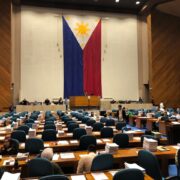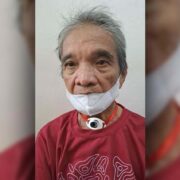Pogo ban’s windfall

It’s a good problem to have: What should we do with billions of pesos’ worth of suddenly available assets in the wake of the total ban on Philippine offshore gaming operators (Pogos) effective the end of this year?
President Marcos on Nov. 5 ordered an immediate ban on Pogos, internet gaming, and similar offshore gaming operations in the country in the wake of online scams, fraud, human trafficking, and other criminal activities uncovered in a series of government raids on several Pogo hubs.
The ban has led to thousands of illegal workers leaving the country or being deported, with Pogo-owned assets, including parcels of land and buildings, abandoned posthaste.
Under existing laws, the government can confiscate instruments or properties used for the commission of a crime, Executive Secretary Lucas Bersamin said. The President “does not need to issue a directive … it’s already a given that they will be forfeited if they were involved in a crime,” he added.
But first, the owner or owners of such assets must be convicted of a crime, and Bersamin said the process can take time.
Legislative proposals
It’s a labyrinthine procedure that could involve a legal suit complete with defendants, witnesses, and alleged victims, leading lawmakers to push for legislation to simplify the process.
One such proposal is Senate Bill No. 2868 or the Anti-Pogo Act which would address the legal gaps in the acquisition and management of seized Pogo properties and facilitate their disposition. In his sponsorship speech, Sen. Sherwin Gatchalian explained that the measure would have a provision authorizing the government to seize all “buildings or other structures or facilities, materials, gaming equipment, and gaming paraphernalia used directly or indirectly in violation of this Act, and the proceeds of such illegal act or activity.” A similar bill was filed in the House of Representatives last November.
Some quarters have also suggested filing tax evasion cases against the principals of the illegal Pogo hubs, with the same penalty of forfeiture in favor of the government should they be found guilty under the Tax Code.
Repurposing Pogo properties
Complicated legalities notwithstanding, several government agencies and parties actively involved in exposing the criminal underbelly of the profitable Pogo enterprise have already proposed ways to repurpose the abandoned properties.
Why not use them as government offices, hospitals, school buildings, or even evacuation centers, suggested the Presidential Anti-Organized Crime Commission, adding however that the properties must first be thoroughly inspected to check whether they are suitable for the stated purpose.
Sen. Risa Hontiveros, meanwhile, recommended that the seized assets be sold and the proceeds used to help victims of human trafficking found in the raided Pogo hubs. According to the records of the Inter-Agency Council Against Trafficking, over 3,000 Pogo employees have been rescued and “presumed to be victims of human trafficking.”
A new law, however, seems to dovetail perfectly with the government’s intention to commandeer and repurpose the seized assets: the Ligtas Pinoy Centers Act, which mandates the establishment of dedicated evacuation centers in every city and municipality across the country.
Also known as Republic Act No. 12076, the new law seeks to eliminate the default use of public school facilities as evacuation centers during disasters like typhoons, floods, earthquakes, and other emergencies.
Retrofitting facilities
While the Department of Education allows classrooms to serve as evacuation centers, the use of school facilities is capped at 15 days to minimize disruptions in the students’ education. Local government units (LGUs) have been asked to do this only as a last resort.
Admittedly, a lot of repairs and refurbishing must be done to retrofit the seized properties into evacuation centers if they are to adhere to stringent standards, including the ability to withstand wind speeds of up to 300 kilometers per hour and seismic activity up to an 8.0 magnitude. They must also be well-ventilated and be equipped with essential facilities, such as sleeping quarters, separate shower areas, kitchens, health-care spaces, and recreational areas, among other features to ensure the evacuees’ privacy, dignity, and well-being.
But having enough space and the physical structures already in place is a good start, and one that can be built from the ground up by LGUs and agencies like the National Disaster Risk Reduction and Management Council and the health, social welfare, and public works and highways departments whose inputs can help design the properties for maximum functionality.
This early, while the tedious legal process of forfeiture is being worked out, LGUs can check out and inventory the abandoned Pogo properties in their area, inspect them, and source funds for their possible retrofitting into suggested uses. It’s a windfall of opportunities that should not go to waste.





















